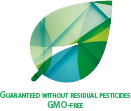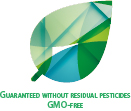One of the inevitable problems due to the production technologies we use, mineral oils already well known by professionals have gradually entered the ranks of dangers that require the attention of institutions. There are many possible sources of contamination: fuels, exhaust gases, lubricating oils, anti-dust agents, surface treatment agents, packaging materials, industrial inks. A complex problem for the food industries and for laboratories that cannot count on a wealth of knowledge shared internationally and on specific risk indications and legal limits to be respected.
THE PROBLEM
These are mixtures of organic compounds (chains of carbon and hydrogen atoms) derived mainly from crude oil, but also synthesized from coal, natural gas and biomass. They are used for their properties in many production sectors: viscosity, cooling capacity, lubricating power and potential as electrical insulators are some of the properties that have brought them to the fore.
They are made up of different types of compounds, these are the ones most in the spotlight:
- MOSH (Mineral Oil Saturated Hydrocarbon): mineral oils based on saturated hydrocarbons, consisting of aliphatic chains (linear) or cyclic compounds (ring).
- MOAH (Mineral Oil Aromatic Hydrocarbon): mineral oils based on aromatic hydrocarbons, mainly consisting of alkylated polycyclic compounds.
Collectively they are known as MOH (mineral oil hydrocarbons) ie hydrocarbons of mineral oils.

It has been a known problem for some time, at least since 2009 when a Swiss laboratory identified the presence of these mineral oils on rice that had been stored in a cardboard package for 8 months.
As for the food industry, the presence of MOH in food products can derive from environmental contamination, lubricants used in harvesting and food production machines, technological adjuvants, food additives and materials in contact with food products (packaging especially if recycled and inks).
Foods affected by substantial contamination risks include rice, cereal flours, cereals, chocolate products, spices, fats and oils and any processed products derived from these categories.
An important feature for the risk profile is the volatility of smaller compounds with lower molecular weight. These can migrate from the packaging, evaporating and then condensing on the food contained and it seems that this can also happen in the presence of plastic barriers. Fortunately, this possibility is greatly reduced if not completely zero for heavy ones that have chains with more than 20 carbon atoms.
However, in addition to the migration from paper and cardboard, there are also other possible causes of contamination, among the most important:
- use as non-stick (baked goods) or anti-dust (cereals and feed) agents;
- components of emulsions used to spread pesticides on crops;
- classic use of oiled jute bags for the transport of some raw materials (typically cocoa, coffee, soy, nuts and cereals);
- entry into the human food chain through fish exposed to pollution from oil spills;
- food fraud (addition to edible oils).
RISK PROFILE
The problem is due to the difficult characterization of the contaminant which, as a mixture of substances, can present components with very diverse toxicity (from non-relevance to carcinogenicity) and often unknown.
Unlike the well-known PAHs (or PAHs in Italian, i.e. polycyclic aromatic hydrocarbons) which have long been classified as carcinogens, MOHs are composed of different toxicity and are still under investigation. In particular, this is associated with their viscosity (more viscous means less dangerous) and the presence of aromatic rings (above the 3 aromatic rings they are assumed to be carcinogenic). For this reason aromatic hydrocarbon mineral oils (MOAH) are usually considered more critical than saturated hydrocarbon mineral oils (MOSH).
Since 2012, EFSA has carried out a monitoring on the presence of MOH and their toxicology, from this it has obtained an official opinion (which you can find here in English), concluding that the potential impact on health deriving from MOH varies significantly. MOAHs can act as genotoxic carcinogens, while some MOSHs can accumulate in human tissues and cause adverse effects on the liver. However, no acute effects of any kind were noted.
It reports that “from the available data, low levels of saturated MOH were present in all food groups examined, while high levels were sometimes found in” bread and rolls “and” grains for human consumption “due to their use, respectively, as release agents / non-stick agents and spray agents used to brighten cereals. The presence of both saturated and aromatic MOH (although data are more limited for the latter) in dry foods, including desserts based on “pudding” and pasta blends, can be partially attributed to the use of packaging with paper and / or recycled cardboard. Exposure to saturated MOH through diet was higher among younger consumers than in adults and the elderly “.
We must not forget that to possibly worsen the risk profile of MOHs is the possible presence in the mixtures also of PAH (or IPA) that is polycyclic aromatic hydrocarbons which, as we have said, are recognized carcinogens.
PREVENTION
In consideration of EFSA’s opinion, the European Commission issued Recommendation (EU) 2017/84, of 16 January 2017, on the monitoring of mineral oil hydrocarbons in food products and in materials and objects intended to come into contact with food. .
As for the food sector, the source that probably contributes most to human exposure is probably the migration from materials in contact with food. Under the magnifying glass there are therefore pre-packaged foods (especially paper and cardboard packaging recycled in relation to the inks used), the presence of food protection barriers in the packaging and the equipment used in the processing and preservation processes. We try to work mainly on those parameters that seem to exacerbate the problem such as time and storage conditions.
The monitoring activity should cover: animal fats, bread and rolls, fine baked goods, breakfast cereals, confectionery products (including chocolate) and cocoa, fish, fish products (canned fish), cereals intended for human consumption, ice cream and sweets, oil seeds, pasta, products derived from cereals, dried legumes, sausages, nuts, vegetable oils, as well as the materials in contact with food used for these products (MOCA).
With regard to the problem, the member states (with the involvement of the Food Sector Operators) are engaged on four fronts:
- Monitoring of the products indicated and the packaging materials used
- If MOHs are detected in food, they should carry out further investigations in the establishments concerned to determine their possible source (s) (production and processing methods, hazard analysis and critical control points – HACCP – or similar systems and measures implemented for the purpose of prevent such contamination).
- If MOHs are detected or originate in food contact materials, they should collect data on these materials (type and composition of the packaging, presence of functional barriers, shelf life of the packaged food) and carry out further investigations at production and processing.
- They should collaborate with European bodies in charge of drafting general guidelines according to their needs related to the development of skills in analysis.
It is important to reduce contamination the use of inks, glues free of MOAH in the printing sector (this is in fact the main source of contamination in recycled packaging materials). Absence of MOAH is also an essential feature of mineral oils used in the food industry (food grade). You can also work to prevent migration processes with barrier systems made of specific materials that can block the most volatile compounds on the inside of the packaging before they come into contact with food.
THE RIGHT PRODUCTS FOR EQUIPMENT MAINTENANCE
Some of the iBiotec products that we offer, are free of HC, MOSH / POSH, MOAH; below is the list of products and their use.
- IMPACT, 100% VEGETABLE RELEASE, MULTIFUNCTIONAL FOR 1000 APPLICATIONS. Guaranteed without residual pesticides and without GMOs. Easily and quickly biodegradable
- BIOCLEAN AL HP, SUPER CONCENTRATED CLEANING DETERGENT. Eliminates all fatty substances of mineral, vegetable, animal origin, all inorganic residues, dust, soot, combustion residues.
- BIOCLEAN AL HP, NON CONCENTRATED CLEANING DETERGENT, READY TO USE. Same applications as the super-concentrated formula. PRODUCT WITHOUT DANGER PICTOGRAM.
- NEOLUBE ALSI 220, SPECIAL SILICONE GREASE GASKETS. Grease for taps, gaskets, elastomers, rubber. Descaler. Authorized for contact with drinking water. Electrical insulator
- NEOLUBE AL 500, GREASE FOR EXTREME PRESSURES. Additivated with antioxidant and anticorrosive. Strong loads. Low and high speeds. Very low temperatures. Excellent resistance to water and steam.
- NEOLUBE SOL 4 PLUS, SUGAR DISSOLVING LUBRICANT OIL. Oil for preventive and curative treatment.
- NEUTRALÈNE 1079, CLEANING SOLVENT. Odorless solvent, without hazard pictogram. Easily and rapidly biodegradable CEC L33T82 – OECD 301 A. Without containment obligation, it can be used for the elimination of non-polymerized adhesives, inks, resins. Can be used in immersion, by drying, by sprinkling, in tanks.
- NEUTRALÈNE VG AL 1, VEGETABLE DEGREASER. Component of vegetable origin guaranteed without pesticides and without GMOs. Highly cleansing and dissolving. Eliminates all greasy substances, vegetable bitumen, liming residues, liquid and greasy inks.



